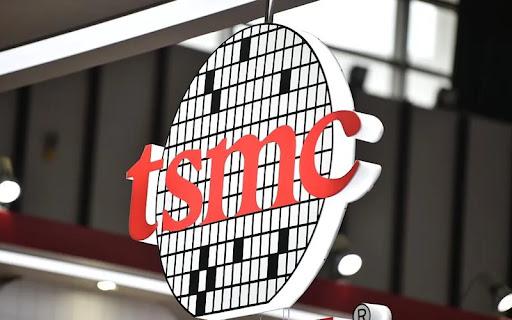TSMC Takes the Lead: 3nm/5nm Processes Drive Significant Revenue Growth in 2024
TSMC's dominant position in the 3nm and 5nm process market is attributed to its leading position in advanced technology fields such as artificial intelligence and high-performance computing, as well as its strategic acquisition capabilities. This has solidified its market leadership and enabled it to meet the increasing demand for advanced chip solutions. In the second quarter of 2024, TSMC achieved a revenue of 3367 billion New Taiwan dollars, a rapid growth that reflects TSMC's capture of the artificial intelligence boom.
TSMC's 3nm and 5nm processes are expected to bring in more than 1 trillion New Taiwan dollars in revenue in the first three quarters of 2024, approximately equivalent to 31 billion US dollars. This revenue growth is mainly due to the demand from key customers such as Apple and NVIDIA. Particularly, Apple may adopt TSMC's 3nm nodes for the processors of the next-generation iPhone 16 series, while NVIDIA has also started the production of its Blackwell GPU, relying on TSMC to meet its critical semiconductor needs.
TSMC's continuous technological leadership has allowed it to maintain an overwhelming technical advantage in cutting-edge processes, making its market presence more significant compared to competitors like Intel and Samsung. Moreover, TSMC is actively investing in the future, planning to increase R&D investment, and focusing on the development of the next generation of processes, including 2 nanometers, expecting to continue to hold a dominant position in the next generation of processes.
TSMC has also received substantial subsidies from Mainland China and Japan, totaling 62.5 billion New Taiwan dollars (approximately 14 billion yuan). These subsidies will be used to finance its investments in Kumamoto, Japan, and Nanjing, further promoting its global layout and expansion. As the global demand for high-end mobile phones and artificial intelligence grows, TSMC's overseas investment and operating costs may increase, but the company has stated that it will adopt a flexible pricing strategy to achieve a long-term target gross margin of no less than 53%.
In terms of pricing strategy, despite market rumors that TSMC may initiate new price negotiations in the second half of the year, especially for 5-nanometer and 3-nanometer, and future 2-nanometer processes, TSMC officially stated that it does not comment on pricing issues. It emphasizes that pricing strategy is always strategy-oriented, not opportunity-oriented, and will continue to work closely with customers to provide value.
In addition, TSMC's 2nm process is progressing smoothly and is expected to achieve mass production in the second half of 2025. At the same time, it will also bring the N3X process of the 3nm family, which is aimed at high-performance computing applications. This indicates that TSMC continues to maintain industry leadership in technological development and is expected to continue to expand its market share and influence.
In summary, TSMC's success lies not only in its current revenue growth but also in its profound layout for future technological development. With the acceleration of global digital transformation, TSMC, with its dual advantages in advanced processes and market strategy, is expected to continue to lead the development trend of the semiconductor industry.

Popular Conevo IC Semiconductor
● The ADL5324ARKZ-R7 is a high-performance, broadband radio frequency (RF) drive amplifier manufactured by Analog Devices for a variety of wireless communications and test equipment applications. The amplifier incorporates a dynamic tunable bias circuit that allows customized OIP3 and P1dB performance in the 3.3V to 5V range without external bias resistance. This design allows the designer to customize the performance of the driver amplifier according to the specific design needs, and can implement the dynamic bias of the driver amplifier to adapt to different signal conditions and power consumption requirements. In addition, the ADL5324 has a wide operating temperature range from -40°C to +105°C, making it suitable for power amplifier designs in high temperature environments.
● The HMC531LP5E is a GaAs InGaP heterojunction bipolar transistor (HBT) MMIC VCO manufactured by Hittite. The VCO integrates resonator, negative impedance device, varactor diode, and has half frequency and divider output functions. Thanks to its monolithic structure, VCO has excellent phase noise performance in terms of temperature, shock and process. Low noise MMIC VCO for VSAT radios, point-to-point/multipoint radios, test equipment and industrial controls, and military end uses.
● The LIS2DW12TR is a high-performance triaxial accelerometer manufactured by STMicroelectronics. The chip utilizes a proven microelectromechanical system (MEMS) accelerometer manufacturing process. The LIS2DW12TR is available in a variety of user selectable ranges to measure acceleration at output data rates from 1.6 Hz to 1600 Hz. It has a 32-level first-in-first-out (FIFO) buffer built in, allowing users to store data, thereby reducing the intervention of the main processor. In addition, the device has an embedded self-test function, enabling users to check the functionality of the sensor in the final application. Due to its ultra-low power consumption and high performance, the LIS2DW12TR is ideal for handheld portable applications, especially where long battery life and high-precision motion detection are required.
Website: www.conevoelec.com
Email: info@conevoelec.com








